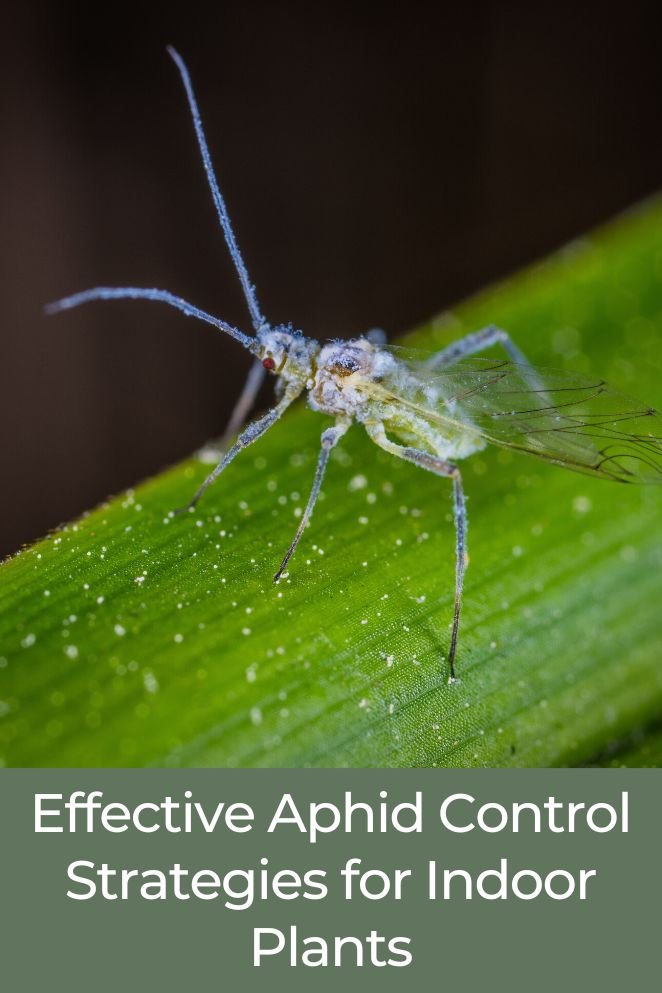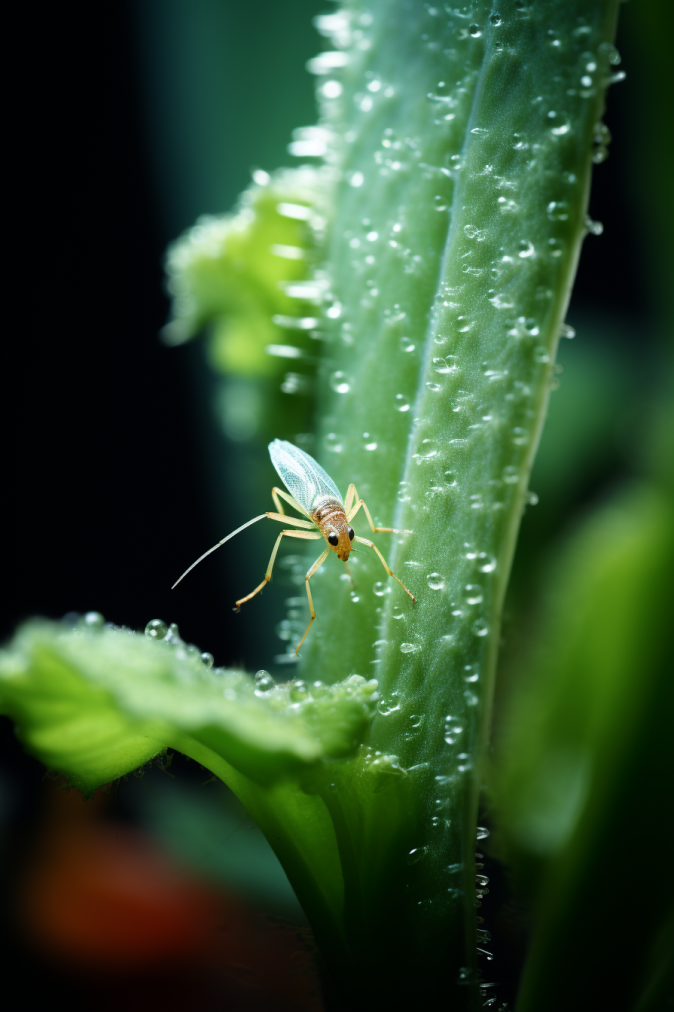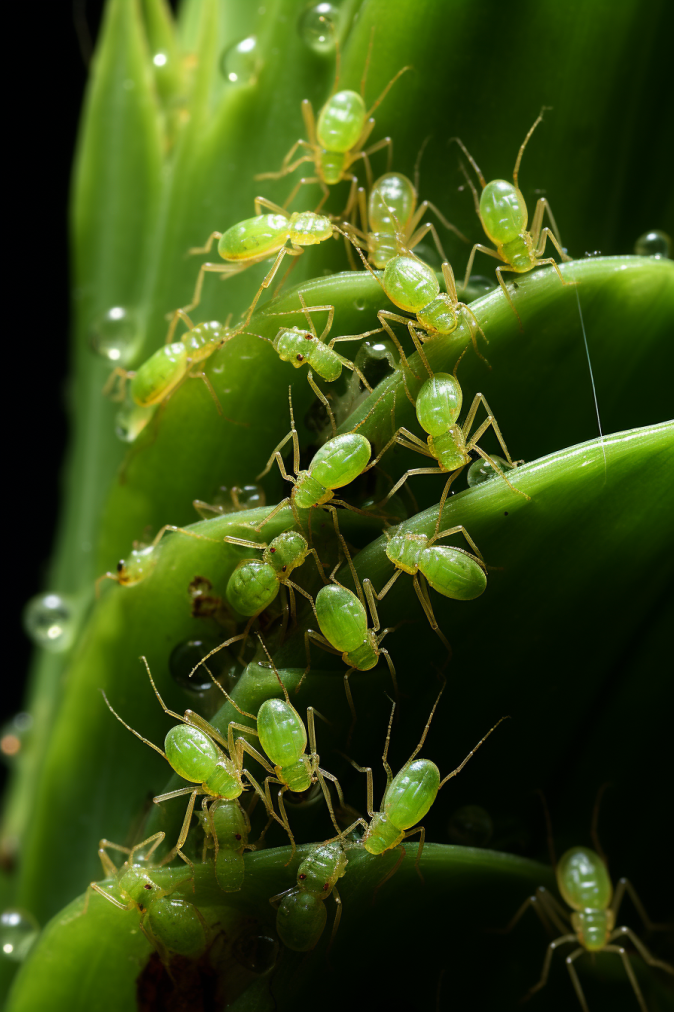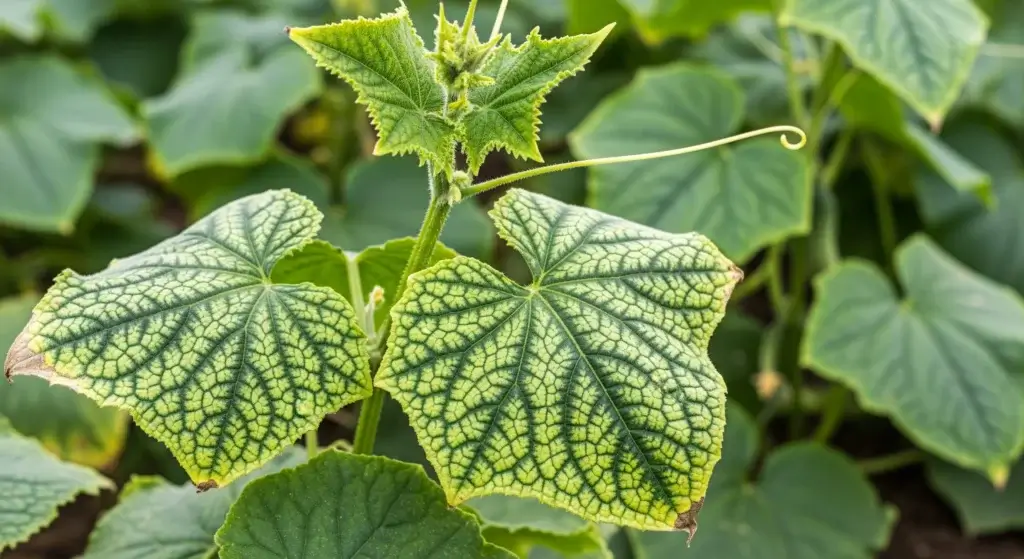
Aphids, those small insects that feed on plant sap, can become a real headache for indoor gardeners.
Despite their tiny size, these pests can quickly multiply and wreak havoc on your cherished plants, causing significant damage.
What is an Aphid?
Aphids, those small, soft insects, feed on plant sap and are commonly referred to as greenfly or blackfly.
They come in various colors, and certain types even have fluffy white appearances.
You can spot them on most garden plants.
Generally, they don’t cause much harm, but when they feed excessively, they can lead to twisted, curled, or yellowed leaves, as well as stunted growth.
To manage them, you can opt for non-chemical solutions or low-risk pesticides.
Thankfully, aphids have natural enemies like lady beetles, aphidlions, and other creatures that help keep their populations in check.
- Read also: Natural Pest Control Methods for Your Vegetable Garden
- Read also: Flowers for Vegetable Garden Pest Control

What Does an Aphid Look Like?
- Size: Aphids are typically the size of a pinhead, making them quite inconspicuous without close observation.
- Shape: They sport pear-shaped bodies with six legs and two long antennae.
- Color: These little bugs showcase a range of colors—from green, yellow, black, and red to pink. Some varieties have a fuzzy appearance due to a waxy coating.
- Mouthparts: Aphids use their piercing-sucking mouthparts to draw sap from plants.
- Cornicles: Their abdomen features two tube-like structures called cornicles, releasing a sticky substance known as honeydew.
How Aphids Damage Plants?
Aphids might seem innocuous, but their impact on plants goes beyond just being unwanted guests.
Their feeding habits and secretions can significantly harm your cherished greenery.
Let’s delve deeper into how these tiny insects wreak havoc on plants:
Sap-sucking predators
- Sap extraction: Aphids have specialized mouthparts designed for piercing into plant tissues and extracting sap. This continuous sap withdrawal weakens the plant by depriving it of essential nutrients.
- Nutrient drain: As aphids feast on the sap, they deprive the plant of vital nutrients required for healthy growth. This nutrient loss leads to weakened, stunted, and sometimes deformed plant growth.
Honeydew secretion
- Sticky residue: As aphids sip on sap, they excrete a sugary, sticky substance called honeydew. This honeydew forms a glossy coating on plant surfaces.
- Mold growth: The honeydew acts as a breeding ground for sooty mold, a dark fungal growth that thrives on the sugars excreted by aphids. This mold not only mars the plant’s appearance but also inhibits photosynthesis, hampering the plant’s ability to produce food.
Deformities and damage
- Leaf distortion: The continuous sap extraction by aphids can cause leaves to curl, wilt, or become misshapen. These deformities compromise the plant’s ability to photosynthesize and thrive.
- Weakness and vulnerability: Weakened plants become more susceptible to other pests and diseases, further jeopardizing their health.
Population explosion
- Rapid multiplication: The sheer speed at which aphids reproduce can exacerbate the damage. Within a short span, a small aphid population can explode into an overwhelming infestation.
- Quick infestation: As the aphid population multiplies swiftly, the collective damage intensifies, potentially leading to severe consequences for the affected plants.
Ant interaction
- Mutualism with ants: Ants are attracted to the sweet honeydew excreted by aphids. They may protect aphids from predators, fostering a mutually beneficial relationship.
- Ant damage: However, the presence of ants can indirectly harm plants, as their tending of aphids encourages further aphid infestation.
Understanding the Aphid Life Cycle

Reproduction stage
- Asexual reproduction: Aphids are prolific reproducers, and they don’t need to mate to produce offspring. Female aphids can give birth to live young, known as nymphs, without any involvement of males.
- Speedy reproduction: This asexual reproduction process is incredibly rapid. Within a week of being born, a female aphid can start reproducing herself. Each aphid can give birth to several offspring daily under favorable conditions.
Nymph stage
- Nymphs’ development: The newborn nymphs resemble miniature adult aphids but are smaller and undergo several molts as they grow.
- Molting process: During molting, nymphs shed their exoskeletons to accommodate their growing bodies. They continue feeding on plant sap, contributing to the damage inflicted on plants.
Maturation stage
- Rapid growth: As nymphs mature, they quickly reach adulthood, usually in about a week or so after birth.
- Winged and wingless forms: Depending on various environmental factors, including overcrowding or changes in plant quality, some aphids may develop wings for migration to new plants.
How Do I Get Rid of Aphids?
Crafting a strategy to oust aphids from your indoor plants involves deploying a range of tactics.
Here’s a comprehensive list of methods that can effectively bid farewell to these persistent pests without causing harm to your cherished plants:
Natural and organic methods
Predatory pals
Encourage natural predators like ladybugs, lacewings, and hoverflies into your garden.
These beneficial insects feast on aphids, providing a long-term solution. Plant flowers like dill, fennel, and alyssum to attract them.
Water warfare
A strong blast of water from a hose can dislodge and knock off aphids.
Repeat this every few days until the population dwindles. Be gentle with delicate plants, though!
Soap solution
Mix a few tablespoons of mild, castile soap with water in a spray bottle.
This soapy solution disrupts the aphids’ protective coating and dehydrates them, leading to their demise.
Test on a small section of the plant first to ensure no adverse reactions.
Neem oil power
This natural insecticide made from neem tree seeds effectively controls aphids.
Be sure to follow the directions on the product and use it only on plants labeled safe for neem oil treatment.
Essential oil options
Diluted sprays of peppermint, rosemary, or garlic oil can repel aphids and discourage them from returning.
Avoid applying directly on delicate plants and choose organic brands for the best results.
Biocontrol and traps
Release ladybugs
Purchase ladybugs commercially and release them near your infested plants.
They’ll happily munch on the aphids and keep the population under control.
Yellow sticky traps
These bright traps attract aphids with their color and sticky surface, effectively capturing them without harming other beneficial insects.
Insecticides (chemical methods)
Insecticidal soaps
These soaps are similar to the homemade variety but formulated for pest control.
They work quickly and effectively but may require multiple applications.
Opt for insecticidal soaps with pyrethrins as the active ingredient for faster results.
Horticultural oils
These oils smother aphids on contact, providing effective control.
Choose options labeled for aphid control and follow the instructions carefully. Be mindful of potential harm to beneficial insects and consider using them only for severe infestations.

How to Prevent Aphids from Coming Back?
They say it’s best to stop problems before they start!
To prevent aphids from taking over, there are some proactive things you can do:
Encourage helpful insects
Ladybugs, lacewings, and parasitic wasps are nature’s heroes against pests.
Attract them by planting flowers they love, such as dill, fennel, yarrow, and nasturtiums.
Give them shelter with mulch, leaf piles, and insect houses.
Support plant health
Healthy plants can fend off pests better. Make sure they get the right amount of water, good drainage, and enough sunlight.
Avoid overdoing fertilizers, as that might invite aphids.
Companion planting
Plant herbs like garlic, chives, rosemary, and sage among aphid-prone plants.
Their strong scents can send aphids packing. Consider planting some sacrificial plants like nasturtiums to divert aphids from your main crops.
Rotate your crops
Move your plants around each season.
This messes up aphid hangout spots and stops them from getting too cozy with certain plants.
Block them out
Cover your plants with row covers or netting to keep aphids away. Sticky traps can nab flying aphids before they settle in your garden.
Regular inspection
Regularly inspect your plants for early signs of aphids. Early detection allows for quicker intervention and prevents large-scale infestations.
Prune and remove
Remove any infected plant parts or fallen leaves to eliminate potential breeding grounds.
Avoid chemical pesticides
Avoid using broad-spectrum pesticides, as they can harm beneficial insects along with pests.
Mulching
Using mulch can discourage aphids from reaching the base of plants.
- Read also: A Guide to Aphid Control on Your Roses
- Read also: Cabbage Aphid Control: Effective Strategies for a Healthy Garden
Conclusion
When dealing with aphids, staying watchful and using various strategies is crucial.
Learning about how they behave, using different control methods, and keeping your plants healthy can help you regain control over your indoor garden.
Frequently Ask Questions
Fortunately, aphids don’t directly harm humans.
While aphids tend to favor certain plants, they can infest a wide variety of indoor plants.
No, there are several natural and DIY remedies that effectively handle aphids without the need for harsh chemical solutions.



